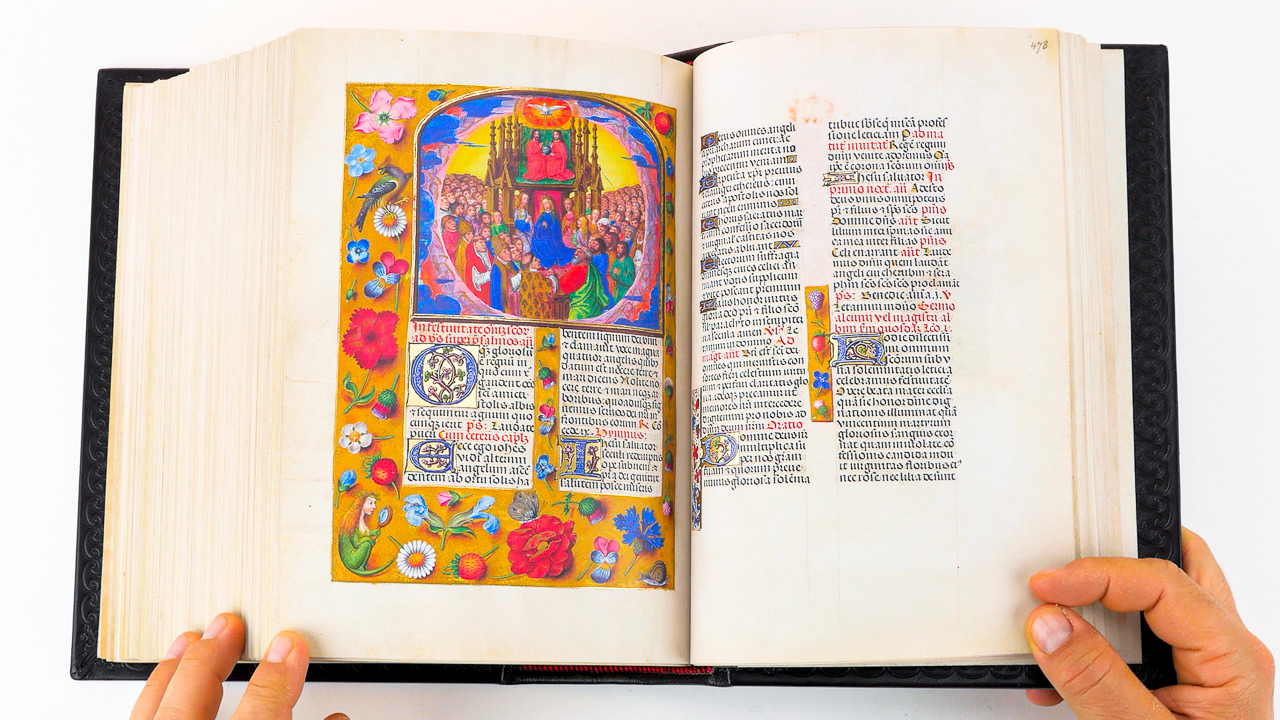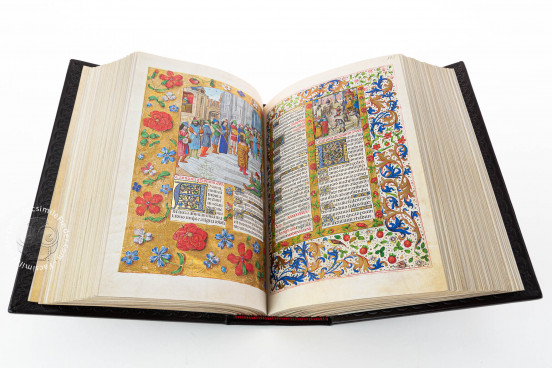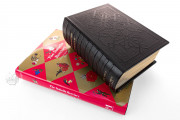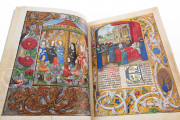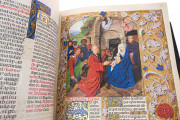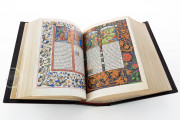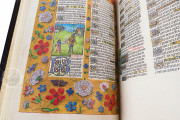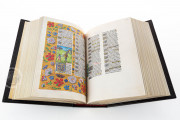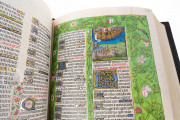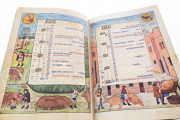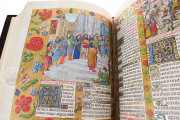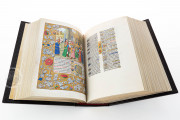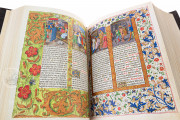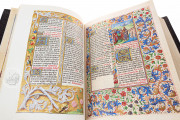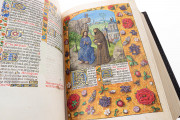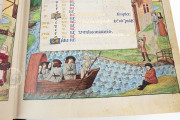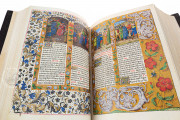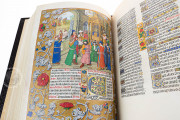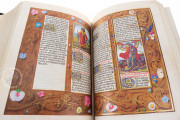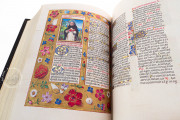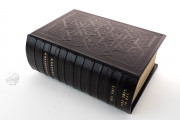The Isabella Breviary is a Christian book of prayers, psalms, and chants illuminated by the Master of the Dresden Prayer Book and an associate, Gerard David, and the Master of James IV of Scotland. These illuminators worked between 1484 and 1497 in Bruges and probably Ghent, but some miniatures were added only later. The book was presented to Isabella I, Queen of Spain, to commemorate the betrothals of her children. Every page includes painted decoration, and there are two full-page miniatures, forty-one half-page miniatures, ninety-eight column miniatures, and more than 100 full decorated borders.
Although the text is liturgical, the book was intended as a luxury object and an aid to private, rather than communal, prayer. The manuscript comprises prayers and chants of the Divine Office, arranged in liturgical order, divided at Easter by the complete biblical book of Psalms, and preceded by a calendar.
Two Phases, Three Master Painters
The Master of the Dresden Prayer Book painted all but two of the miniatures of the first half of the book (fols. 8-258), and a close associate painted the historiated borders of the calendar (fols. 1-7). The miniatures for Christmas and Epiphany are the work of the renowned panel painter Gerard David (fols. 29r and 41r). The miniature of Saint Barbara (fol. 297r) is also attributed to David. It is in the second half of the book, in which the Master of James IV of Scotland painted most of the miniatures (fols. 259-499).
Border Decoration to Fool the Eye
Many of the painted borders are of the Flemish strewn flower type, with trompe-l'oeil ("fool the eye") flowers, animals, birds, and insects that appear to be strewn across the painted gold-stippled background and cast shadows.
Other borders feature trompe-l'oeil fleshy, twisting, two-colored acanthus vines with little berries and gold balls against the unpainted parchment. Some of the strewn flower borders feature text in large capital letters. Other variations include depictions of gemstones and fabric patterns.
Ancient Israelite Music Making Visualized
The miniatures in the psalter portion of the book include rarely depicted scenes, many of which focus on the musical activity of the Israelite King David, the purported author of the psalms. In one, David is shown twice: with his quill in hand at a writing desk and leading the Levite musicians on the Temple steps (fol. 184v).
Added Illumination
The major illumination was unfinished when the manuscript arrived in Spain. A section of the offices for saints' days had blank spaces reserved for miniatures (fols. 263-399). A Spanish artist working around 1490-1500 supplied seven miniatures, most painted on separate sheets of parchment and pasted into the volume, and an English painter supplied five more in the nineteenth century.
A Gift for a Queen
Francisco de Rojas, Spanish ambassador to the Holy Roman Empire, presented the manuscript to Isabella I (1451-1504), Queen of Spain, by 1497. His coat of arms and the dedicatory inscription are painted over an already painted border (fol. 437r); it is thus uncertain whether he originally commissioned the work. The gift commemorated the betrothals of Isabella's son and daughter to children of future Holy Roman Emperor Maximilian I (1459-1519).
Several Distinguished English Owners
In the early nineteenth century, the book passed through the hands of four English collectors—John Dent (d. 1826), Philip Hurd (d. 1831), John Soane (1753-1837), and John Tobin (1763-1851)—before the British Museum purchased it in 1852. The current binding dates to the early nineteenth century and incorporates sixteenth-century blind-tooled brown morocco covers. The manuscript entered the British Library upon its establishment in 1973.
We have 1 facsimile edition of the manuscript "Isabella Breviary": Breviario de Isabel la Católica facsimile edition, published by M. Moleiro Editor, 2010
Request Info / Price
